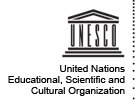Countries: Cameroon
Workplace gender discrimination in media houses and a general lack of respect for women’s human rights creates barriers for women entering the media industry. Women media workers face sexist attitudes, sexual harassment, pay inequalities, discrimination in assignments and promotions, inflexible work environments and a lack of support mechanisms. The consequent lack of women in the media is reflected in editorial content, which often either fails to cover many women’s stories or does so in an inadequate manner. This project thus seeks to empower female journalists through training, with a...
The liberalization of the audiovisual space in 1990 witnessed an upsurge of private radios, television stations and newspapers across the national territory. Cameroon today boasts of over 300 newspapers, more than 200 private radio stations and over 50 private television channels. This dramatic growth of private ownership of media space has been supported by a modest growth in training institutions, most of which offer middle level journalism training.
This modest growth in the area of journalism training has created a vacuum in radio and television stations that require personnel...
Since the 90s, with the advent of democratic process and successive government action taken to open up the audio-visual sector, great strides have been made in the Central African media landscape. The implementation of community-radio development programmes, supported by the UNESCO subregional office in Yaoundé, has led to the establishment of several community radios. Today, the country boasts close to 100 community and rural radios, as well as a 40-member national network of community radio operators—the ReRaC—, which seeks to promote good governance, and the conservation and sustainable...
Science and technology hold the key to solving many of the challenges faced by the modern world. To be able to grasp this concept, populations must be able to recognize and identify the importance of these two fields among the mass of information derived from modern rational knowledge. In delivering this message, scientific media and scientific journalists play an essential role. Scientific journalism contributes to a better understanding of the vast domain of science. It also contributes to the advancement of the latter since it presents scientific findings to the public, evaluates and...
In recent years, the internet has become the dominant force in directing media strategy. In light of this, broadcasters are establishing new objectives in terms of network-based production and cooperation, parallel post-production, adaptation of themes to different media, each with a specific form and treatment. This process involves producing search-engine interpretable content since the main idea driving the Web is to make content accessible and understandable. It is therefore essential to train radio and television production staff in new media, to allow them to better disseminate...
With the recent transformations in the way in which journalism and media professions are exercised, the Ecole Supérieure des Sciences et Techniques de l'Information et de la Communication (ESSTIC), as a reference in journalism training, must constantly monitor and reassess its training staff's skills and training equipment. In order to adequately prepare Cameroonian and other Central African students in the profession, ESSTIC must command the very best in terms of the trainer expertise and the tools required for appropriate training in new media practices. The project aims to train media...
Delays in the area of communication still persist, particularly in rural zones, some of which are still very isolated. Additionally, the Eastern zone, near the border with the Central African Republic, has attracted thousands of refugees fleeing the troubles in their country. The Office of the United Nations High Commissioner for Refugees (UNHCR) has set up 72 sites to provide shelter for the refugees. To cope with the situation, the World Food Programme (WFP) has implemented communication and foodsupply policies targeting the refugees at the 72 sites. Agents using motorcycles purchased by...
The project aims to host the SODEMA website for a period of one year, and to provide ongoing maintenance of the SODEMA website over the same period. The SODEMA website ensures democracy by contributing to the free flow of information for the media. The reference link, for example, gives journalists the legal framework within which to defend their rights. The website also provides a forum for free expression, since it is a public site open to all incoming contributions. The site allows journalists who are geographically dispersed to exchange views on common concerns and goals, thereby...
This project was elaborated in response to the lack of professionalism among journalists in Cameroon. It seeks to provide an opportunity for journalists working in The Standard newspaper to develop their intellectual and professional capacities through an appropriate and well-tailored training programme, with a view to ensuring sound professional practice and reinforcing the newspaper's editorial independence. Reporters will be trained on media law and media ethics, and taught how to improve their professional skills. Emphasis will be put on the need to respect privacy and to check...
